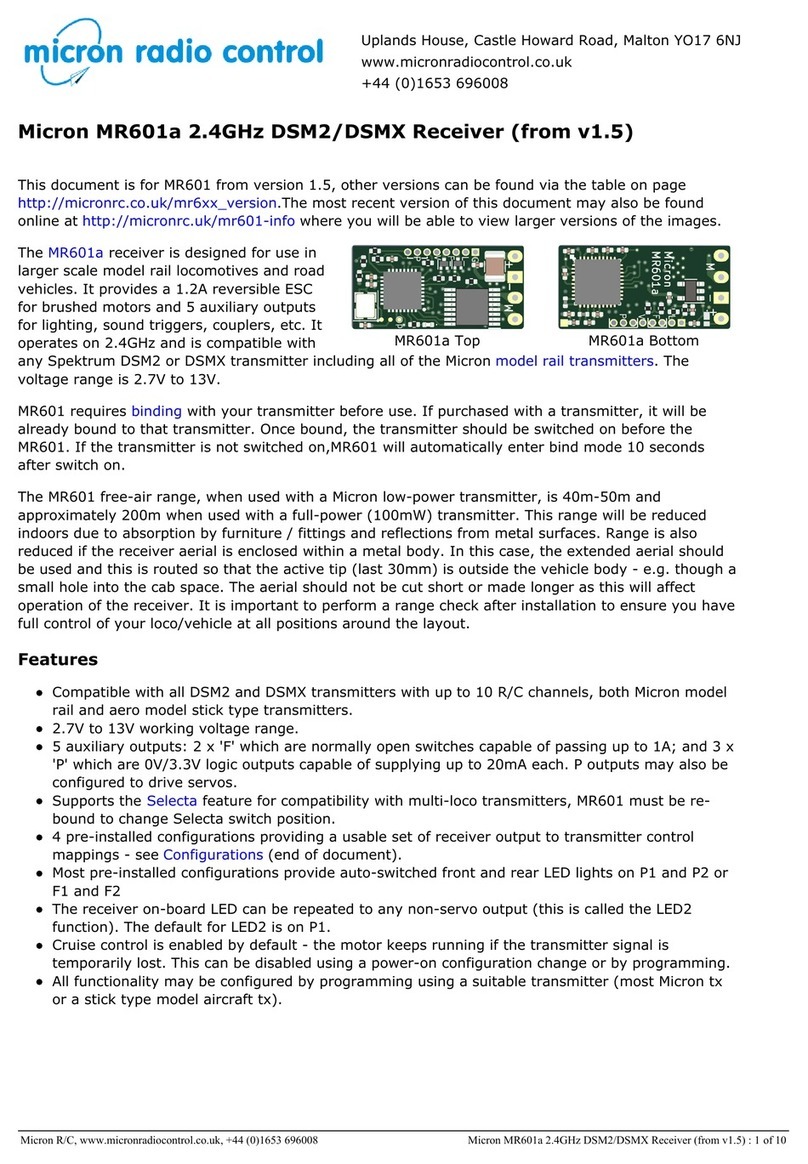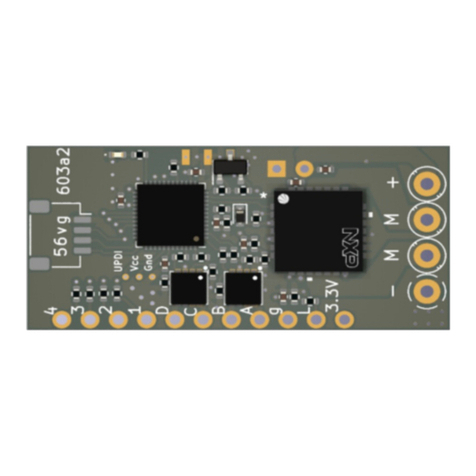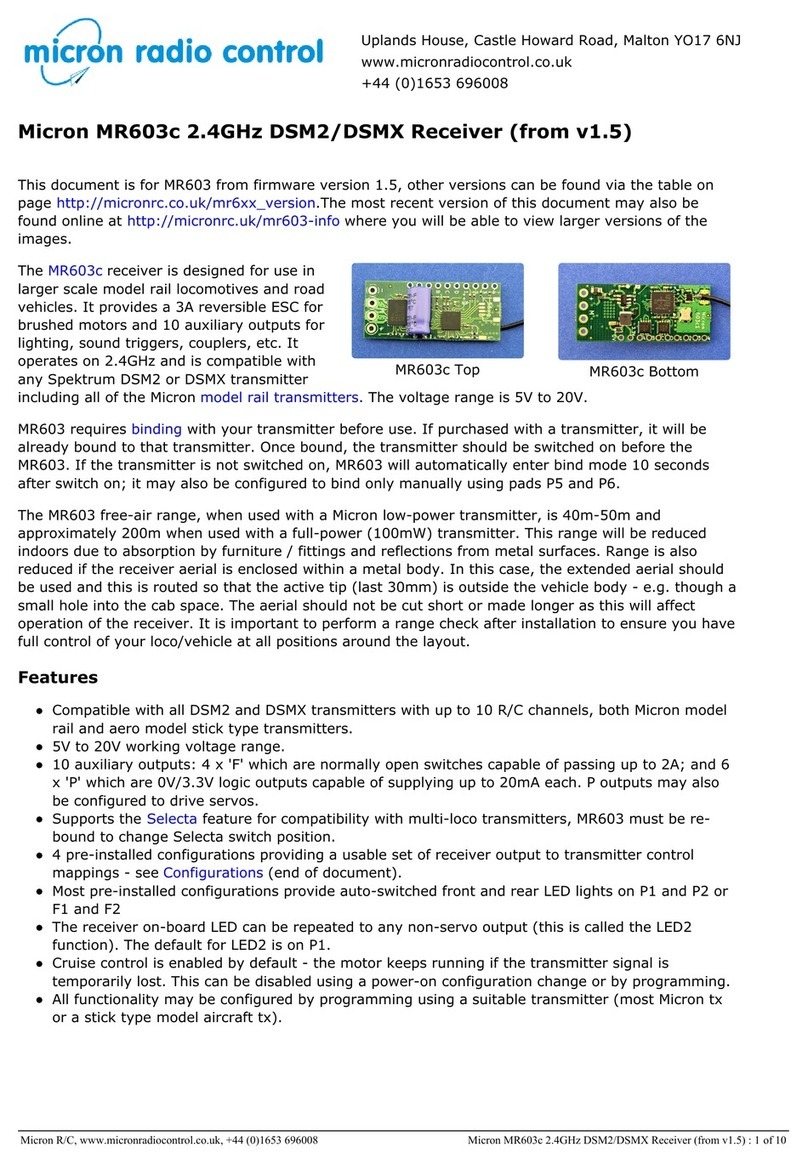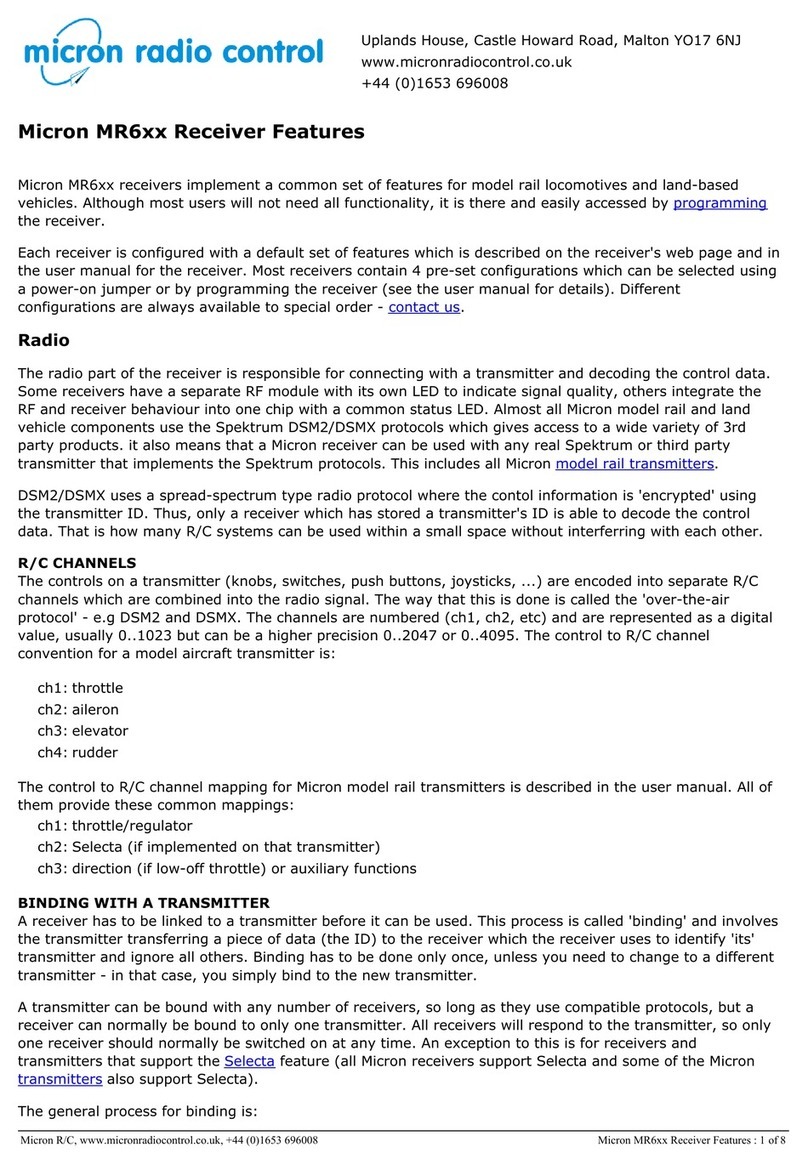Manual Bind
Uplands House, Castle Howard Road, Malton YO17 6NJ
www.micronradiocontrol.co.uk
+44 (0)1653 696008
Micron MR001c Quick Start Guide
This guide is designed to get you started with MR001c as quickly as possible. More information can be
found in the user manual - http://micronrc.uk/mr001c-info.
MR001c is a 2.4GHz DSM2/DSMX 10 output receiver designed for model railway use. It is suitable for
live steam and large battery electric locos. It can be used to drive servos, speed controllers and LEDs.
If purchased with a transmitter, MR001c will be bound to the transmitter and is ready for use;
otherwise, it requires binding to your transmitter. Once bound, the transmitter should be switched on
before the MR001c. If the transmitter is not switched on, MR001c will automatically enter bind mode 5
seconds after switch on; it also be manually bound using a jumper plug on the P5/P7 signal pins.
Usage
Do not bend the receiver circuit board or use with the protective sleeve removed.
Ensure unused pins of P1..P7 cannot contact any metal.
Connect to a battery or ESC output that can provide 3.5V to 8.5V under load. Some servos can
draw a heavy current when starting to move and the voltage of a 'tired' 4 cell NiMH battery may
dip below 3.5V causing MR001c to reset. If this happens, a 5 cell NiMH battery will give better
results. A resettable fuse in the battery positive lead is recommended to protect the battery in the
event of a wiring or component fault. If you need to power from a single LiPo cell (e.g. because of
space reasons), a 5V or 6V booster should be used.
If MR001c has not been supplied configured for your use, set the throttle mode, Selecta and
Cruise control features as required (see 'Power-On-Changes').
If required, bind to your transmitter (see 'Binding').
Connect your servo(s) or speed controller to the appropriate pins (see 'Connection Diagrams') and
adjust the servo direction and/or travel as required (see 'Servo Adjustment').
Fix MR001c in place and route the aerial(s) to that the last 30mm can 'see' the transmitter for
best range - e.g. by routing through a hole in the vehicle body. The aerial should not be cut short
or made longer as this will affect operation. It is important to perform a range check after
installation to ensure you have full control of your loco at all positions around the layout. Double
sided foam-cored sticky tape is ideal for mounting the receiver.
Binding
To bind:
1. with transmitter off, switch MR001c on
2. wait for the RF LED to flash fast
3. switch your transmitter on in bind mode
4. the RF LED will stop the rapid flash, flash a couple of times randomly
and then light continuously
5. MR001c is now bound to your transmitter
If the receiver RF and CPU LEDs do not come on solid (no flash) within 10-15 seconds, the bind process
has failed. This can happen for several reasons and does not normally indicate a fault. If you get a bind
fail, try again after moving the Tx and Rx slightly further apart or changing the relative orientation of
the aerials. Binding is most reliable when no other 2.4GHz transmitters are turned on.
Connections
MR001c has 7 sets of output pins which can be used for servos, speed controllers or LEDs for lighting.
The pin sets, numbered from the top of the diagram below, are 0.1" pitch to take standard R/C plugs.
An additional 8th output for LED or sound card trigger is available via a JST-ZH socket and a 9th and
10th output are on an optional Molex Picobade socket. These connectors are at the rear of the receiver
and, although P8 has 3.3V and 0V pins, it cannot be used for powering a servo as the 3.3V pin is



























